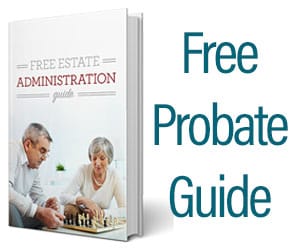Many families have friends, relatives, or colleagues who suffer with daily challenges in some way or another that limits them. These challenges can be a developmental, mental, or physical disability. In the past, most families of disabled loved ones would keep their struggles hidden because of the taboo associated with disabilities. Thanks to this, there were few advisors trained to help families with disabled members. These families, left to their own devices, had very limited options to ensure their disabled family members were taken care of after their primary caregivers dies or were unable to provide the care needed.
Luckily, a lot has changed for families that want to plan for the disabled. There are courses now offered in law schools that now address the needs of disabled people. The number of lawyers working in this area has increased dramatically. Families are no longer let on their own to figure out care for their loved ones with a disability.
The Funding of Special Needs
One of the biggest obstacles families face is how to care for their disabled family member long term in a way that is geared to their specific preferences and abilities. Most of the time, this is done through a Special Needs Trust, or SNT. This sort of trust can be customized to cover the unique circumstances of every person looking to help support a disabled family member. When an SNT is carefully drafted, it can allow the disabled beneficiary to continue receiving government benefits that are need-based, such as Supplemental Security Income and Medicaid. These services are very important to the special needs of the disabled beneficiary.
Government benefits do not just benefit the poor as many people think. To provide fully for the disabled person’s needs, both federal and state laws encourage SNT planning that will also maximize the use of all the resources available through government and private means. For many people with limited money, the programs offered by the government can be the primary source of income for their needs now and in the future. Even families with their own personal resources can benefit from government programs that help fund the needs of disabled family members. SNT can be the cornerstone of the partnership between these families and the government.
For A Free Estate Information Guide
Which SNT is Best for Me
Most of the time, an SNT is set up to benefit a person with a disability and is both privately and professionally managed by a corporate trustee. There are two types of basic SNTs available for families: the Supplemental Care SNT and the General Support SNT. Most SNTs are classified as Supplemental Care. These are created to be a source of benefits for the disabled family member once all the benefits from the government have been exhausted. The benefits from this SNT are not considered as available resources when determining whether someone qualifies for programs that are need-based. On the other hand, the General Support SNT serves as the primary source of benefits to the disabled family member, so they count towards the member’s available resources and oftentimes make them lose their eligibility for need-based services.
To figure out which type of SNT is best for the beneficiary, you must determine whether the assets are enough to fully cover the costs of caring for the beneficiary for the rest of their life. If they are sufficient, the General Support SNT will work well. If the amount available to them is not sufficient to cover all their needs, and they also require government assistance, then a Supplemental Care SNT will be the way to go. Typically, a family will want to maximize the resources available to the beneficiary, so the Supplemental Care SNT is the one usually chosen.
Care that is Comprehensive and Flexible
The term “special needs” encompasses a wide range of “quality of life” options and related services that can be customized to meet the particular needs of the beneficiary. As an example, if all the medical needs of the beneficiary are already taken care of, the SNT can provide funds for other services such as personal assistants or other helpful aids. The assets from the SNT can also be used to help pay for the living arrangement modifications of the beneficiary such as making it more accessible or even the cost of an assisted-living home.
There are other common things an SNT commonly disburses funds for such as:
- Vocational and recreational activities
- Vacations and hobbies
- Opportunities for training and education
- Any communication equipment needed
- Professional services required by the beneficiary, such as claims processors, accountants, attorneys, and more
- A service animal or pet for the beneficiary
Many of the disbursements received from a SNT are permissible due to the creative drafting by the attorney if it can be shown that the beneficiary derives the primary benefit.
Creating and Funding a SNT
A SNT can be created while someone is living or through their will. It can either be funded by the assets of the beneficiary or by a third party, such as a relative. When the SNT is funded with the assets of the beneficiary (self-settled), federal law mandates that Medicaid or other government programs must be reimbursed upon the death of the beneficiary from whatever assets are left. Once these programs are reimbursed, any descendants of the deceased beneficiary can share in any remaining assets.
Federal law has two other requirements for a self-settled supplemental care SNT as follows:
- The disabled beneficiary must be classified as disabled using the definition provided by the Social Security Act, meaning they are unable to engage in any activity for substantial gain because of their disability
- When the SNT is established and funded, the beneficiary must be under 65 years of age
If the beneficiary is over 65 when the Supplemental Care SNT that is self-settled is wanted, the law gives only one option and that is a pooled SNT where many disabled people participate. This can be done usually through the state or a private company.
Another option is the third-party SNT. This kind of SNT is not subject to government payback because it is not funded with the beneficiary’s assets. When the beneficiary dies, the property left in the SNT is distributed to whomever the trust agreement lists. Because of this, it is imperative to not mix the self-settled SNT assets with those from a third-party SNT. There is no age limit on a third-party SNT, or any specific disability requirements, because they are not subjected to the federal laws that oversee the self-settle SNTs.
As you can see, there are a lot of things to think about when setting up a trust for a disabled family member. Always be sure to seek the advice of an attorney before you finalized any trust.
Download Free PDF Guide On The Probate Process



